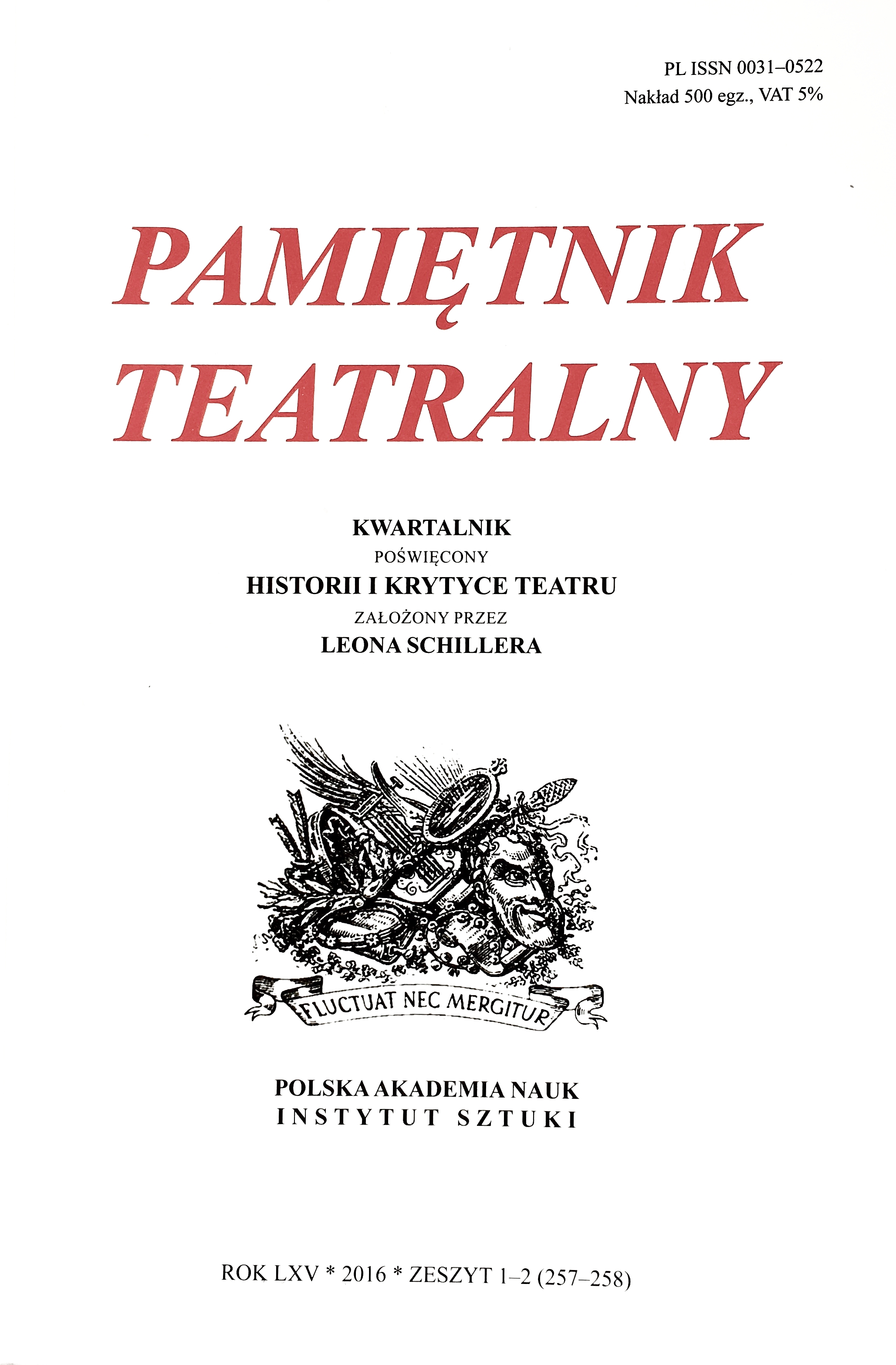Egzemplarz teatralny – między repertuarem
a archiwum
The Theatrical Copy: Between Repertoire and Archive
Author(s): Diana Poskuta-WłodekSubject(s): Theatre, Dance, Performing Arts
Published by: Instytut Sztuki Polskiej Akademii Nauk
Keywords: theatre archives;theartestudies;theatre documentation
Summary/Abstract: For contemporary scholarship, the status of sources to theatre history is changing, and they are therefore subject to attempts at redefining them. On the one hand, development of new technologies enables us to gain almost limitless access to archival documents; on the other hand, however, some doubts are raised concerning the point of their use, since it is impossible to reconstruct or recount a theatre performance from the past based on them, anyway. Yet it is the essence of the theatre historian’s method to constantly experience the rudimentariness of artefacts and ephemerality of theatre. For Polish researchers of younger generations, studying sources does not preclude interest in performance. The issue of theatre memory and the writing or rewriting of history is prevalent in new theories and methods. Ever-newer propositions of tackling it are advanced, e.g. the archive versus repertoire concepts derived from Diane Taylor’s reflexion or ideas based on Rebecca Schneider’s reflexion about the body as archive versus the body as memory medium. Theoretical classification propositions stemming from the notion that some documents become petrified and others need to be made with an ideal recording of performance in mind, which were put forward by Stefania Skwarczyńska, need to be revised, whereas Zbigniew Raszewski’s take on the documentation problem, closer to that of performance studies, turns out to be still useful, which can be confirmed by the on-growing supply of hard-copy and digital documentation that forces us to look for a new classification of it and to acknowledge that all kinds of source documentation to the history of theatre, and theatrical copies in particular, have performative qualities. Their variety and transitional character of the latter makes it possible to acknowledge the performativity of theatre history sources, which could become a common ground for the classical history and new methodological inquiries.
Journal: Pamiętnik Teatralny
- Issue Year: 257/2016
- Issue No: 1-2
- Page Range: 50-74
- Page Count: 25
- Language: Polish

